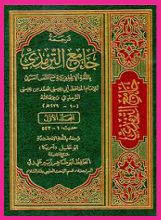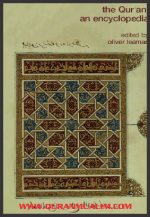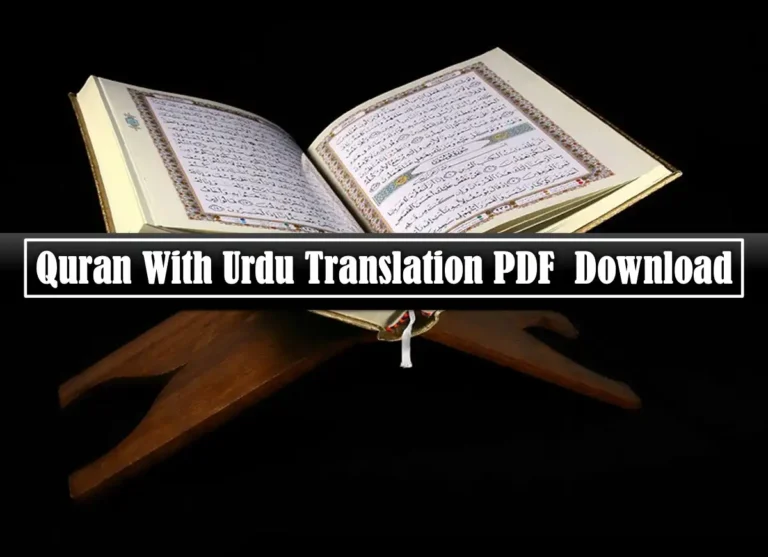Sunan Trimidhi – The full name of Imam Sunan tirmidhi and early education. His writings, His contributions to Collection of Hadith and compilation, The Sunan tirmidhi, The Commentaries on the Sunan.
Introduction of Sunan Reimidhi
Imam Tirmidhī was one of the prominent scholars of the science of Hadīth. His work is regarded as one of the six authentic collections of Hadīth. In this unit we shall know the profile of Sunan tirmidhi and analyse his contribution to Collection of Hadith and transmission.
OBJECTIVES
- The profile of Imam Tirmidhī
- Highlight the Contents of Sunan `t-Tirmidhī
- Review some commentaries written on the Sunan `t-Tirmidhī
- It is hoped that by the end of this unit, students should be able to
- The contribution of Tirmidhi to Hadīth collection and transmission
- Biography of Imam Bukhari | Hadith collection free PDF Books Download
- Biography of Imam Muslim| Hadith collection free PDF Books Download
- Biography of Imam Trimdhi| Hadith collection free PDF Books Download
- Biography of Imam Dawud | Hadith collection free PDF Books Download
- Biography of Hazrat Muhammad | Quranmualim free PDF Books Download
- Hazrat Muhammad (PBUH) | Split the Moon all Free PDF Books Download
Jami at-Tirmidhi Vol. 1 – 1-543 English PDF
Jami at-Tirmidhi Vol. 2 – 544-1204 English PDF
Jami at-Tirmidhi Vol. 3 – 1205-1896 English
Jami at-Tirmidhi Vol. 4 – 1897-2605 English PDF
Jami at-Tirmidhi Vol. 5 – 2606-3290 English PDF
Jami at-Tirmidhi Vol. 6 – 3291-3956 English PDF
Jamia Tirmazi 1 Urdu PDF
Jamia Tirmazi 2 Urdu PDF
Jamia_Tirmizi.rar Complete Books PDF
THE PROFILE AND HADĪTH COLLECTION OF IMAM TIRMIDHĪ AND IT’S COMMENTARY
The full name of Imam Sunan tirmidhi and early education. His writings, His contributions to Collection of Hadith and compilation, The Sunan tirmidhi, The Commentaries on the Sunan.
INTRODUCTION
Imam Tirmidhī was one of the prominent scholars of the science of Hadīth. His work is regarded as one of the six authentic collections of Hadīth. In this unit we shall know the profile of Sunan tirmidhi and analyse his contribution to Collection of Hadith and transmission.
OBJECTIVES
- The profile of Imam Tirmidhī
- Highlight the Contents of Sunan `t-Tirmidhī
- Review some commentaries written on the Sunan `t-Tirmidhī
- It is hoped that by the end of this unit, students should be able to
- The contribution of Tirmidhi to Hadīth collection and transmission
MAIN CONTENT
The full name of Imam Sunan tirmidhi and early education. His real name is Abu Isa, Muhammad b. Isa b. Sawra b. Shaddād. The nisbah Tirmidhī connects him with Tirmidh, a place on the upper Amu Darya. Imam Tirmidhī was born in Dhul Hijjah 209 A.H in one of the villages called Bihra.
Between this village and the city of Tirmidh is about 10 kilometers distance. He was of the tribe of Ghaylān. His descendants settled in Buga during the regime of a ruler called al-Laythī bn Sayar from the tribe of Salim.
On his early life, very little is known, however, it is said he was born blind while other sources said that he lost his eye sight in his later years. He traveled widely to Islamic centers in search of knowledge; he went to Khurasan, Iraq and Hijāz in order to collect traditions.
Give the profile of Imam Tirmidhī.
His writings. Imam Tirmidhī was a prolific writer, not only in the Collection of Hadith but also in other fields of Islam knowledge. The title of some of his scholarly works includes:
- Kitābu `t-Tafsīr
- Kitābu `tā – Tārīkh
- Kitāb al-Hali al-Kubra
- Kitāb al-Hali al-Sughra
- Kitābu `l-Asmā’u wa al-Kunya
- Kitāb a `t-Tabaqātu wa `t-Tārīkh
- Kitāb a`sh – Shama’ilu al – Muhammadiyyah
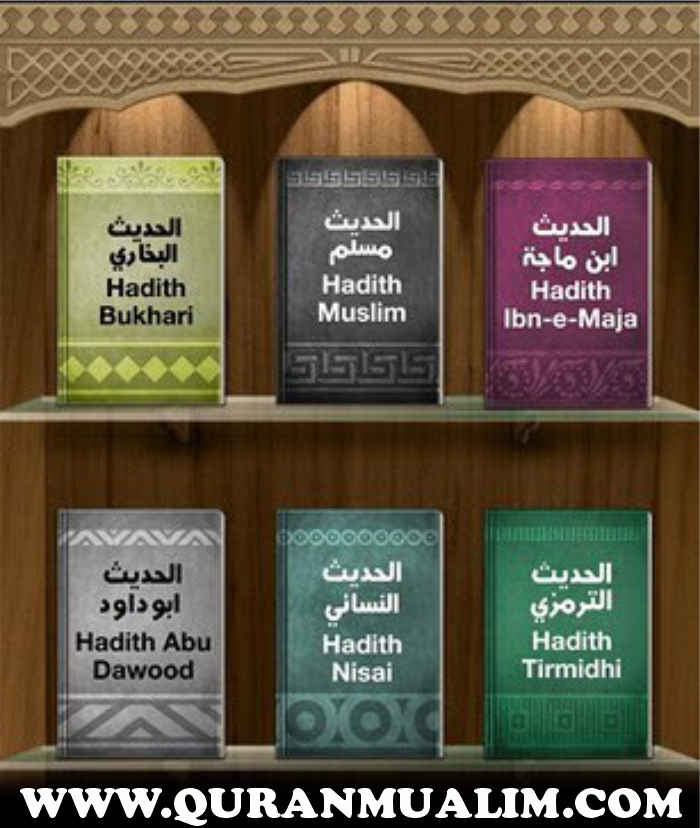
Contribution to Hadīth collection and compilation
Imam Tirmidhī traveled to various places in search of knowledge Collection of Hadith. He stayed with prominent scholars of Hadīth in his time. Among the scholars he benefited from were Imam Bukhārī, Imam Muslim, Imam Abu Daud,
A`s-Sijistānī, Qutaybah bn Sa’īd, Muhammad bn Bashar, Ishaq bn Musa and Sufyān bn Wakī ‘. He also met Imam Nasāī Ibn Mājah Muhammad al-Mathlan, Ziyad b. Yahya, Abubakar b. Abdul Azim and studied from them. Imam Tirmidhī was endowed with good character, retentive memory and piety.
He was a man of integrity who combined search of knowledge with fear of Allah. As a result of that he was highly respected not only by his students but also by his teachers. Imam Bukhārī said to him once:
“what I benefited from you is greater than what you benefited from me.” Many students transmitted from him. Prominent among them are: al-Haytham bn Kulayb, al-Shāshī, Makhlūb, Fadl, Muhammad Mahbūb al-Mahbūbī al-Mazrūī who was the transmitter of his major work on Hadīth compilation know as Sunan.
Discuss the contribution of Tirmidhī to Hadīth collection and transmission.
The Sunan tirmidhi is the major work on which the fame of the Imam rests in the Collection of Hadith. It is also called al-Jāmi‘u `t-Tirmidhī. The work deals with matters of religious observance, law, and personal relationship with God and fellow human beings.
This work bears the title of Şahīh in the edition printed in Cairo in 1292, but elsewhere it is only called al-Jāmi‘u A glance at the list of chapters in the work shows that nearly one half of it is devoted to such subjects as dogmatic theology, popular beliefs, devotion, manners, education and hagiology.
The work contains far fewer traditions than that of Bukhārī or Muslim but also less repetition; two of the chapters are particularly extensive. They are manāqib (Hagiology) and Tafsir al-Qur’ān (Exegesis of the Qur’ān). It contains 4,000 Hadīths.
Traditions Tirmidhi’s work is distinguished by two features; the critical remarks concerning the Isnads (chains of transmission) and the points of difference between the madhhabs which follow every tradition. On account of the latter feature Sunan tirmidhi ’s Collection of Hadith may be called the oldest work on ikhtilāf that has come down to us.
In this method, he tried to mention the degree of reliability of each narrator and identify the names and the titles after which he gives his opinions about the quality of Tradition in point whether it is authentic (Şaħīħ) good (Hasan) or weak (Ðaīf). He also mentioned the opinion of early Jurists, lawyers and Imams concerning the subject.
Highlight the Contents of Sunan `t-Tirmidhī.
The Commentaries on the Sunan a`t-Tirmidhī Scholars who wrote commentaries on Sunan tirmidhi included:
(i) Imam Abubakr, Muhammad Abdullah al-Ishbīlī known as Ibn al-Arabi (d.543) in Fez. He entitled his work: Hārithatu `l-Ahwazī fi Sharh at-Tirmidhī. He spoke in it on Men, Chains and the Strange/Extraneous. He also spoke on variety of grammar, creed, rules, conducts and public interest (maşālih). He excelled in reconciling views and proofs; most especially, the school of thought of his teacher; all are with strong evidence, and brilliant explanation in eloquent Arabic with particular reference to Ibn Arabī. Printed in Egypt..
(ii)Suyūtī d. 911. Qūtu `l Mughtadhī alā Sunan tirmidhi. Prelude consists of place of a Jāmiu in Collection of Hadith, terminologies, concise work, based on printed in India. Some other commentaries have either remained in manuscripts of non extant or perished during fitan/ insurrection. Evaluate two commentaries written on the Sunan tirmidhi His Death: Imam Tirmidhī died at one of the boroughs of Tirmidhī circa 270/ 275 A.H
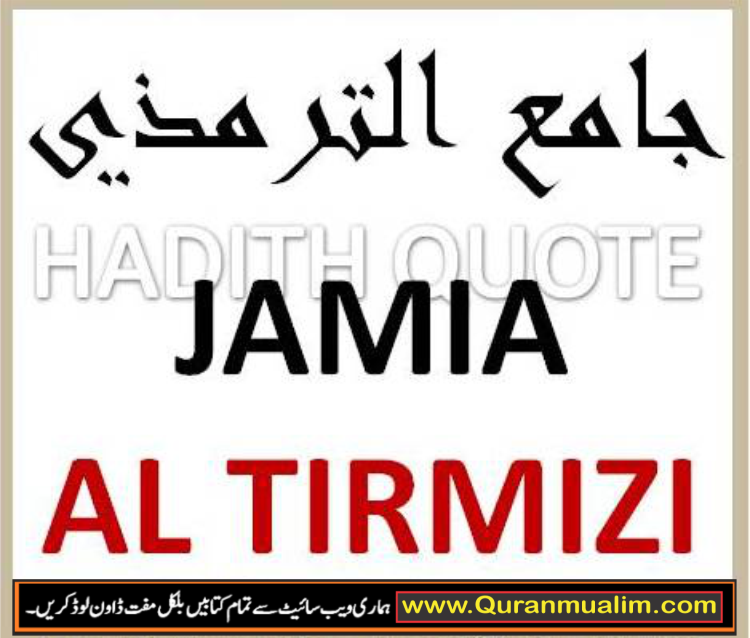
CONCLUSION
Muhammad bn Sawra a`t-Tirmidhī authored one of the canonical collections of Prophet Muhammad’s Traditions whose authenticity is acknowledged in the Islamic circles having traveled widely to Khurāsan Iraq and Hijāz in order for the purpose.
Teachers : Among his masters were Imams Ibn Hanbal, al Bukhārī and a`s-Sijistānī. Writings : Two of his works have been published. His collection of Traditions and his Shamā’il. a collection of traditions concerning the person and the character of Prophet Muhammad.
He had other works on various Islamic studies ascribed to him. His Collection of Hadith bears the title of Şahīh in the edition printed in cairo, 1292; elsewhere it is called Jāmi‘u A glance at the list of chapters shows that nearly one half of the work is devoted to such subjects as dogmatic theology, education and hagiology.
The work contains far fewer traditions than those of Bukhārī, or Muslim but also repetitions, two of the chapters are particularly extensive; they are manāqib and Tafsīr. Though traditions showing a predilection for Ali are not rare, those which favour Abu Barkr, Umar and Uthman are not lacking. Tirmidhi’s work is distinguished by two features:
the critical remarks concerning the Isnad’s (chain of transmission) and the point of difference between the Madhhabs which follow every tradition on account of the latter feature Sunan tirmidhi may be called the oldest work on Ikhtilāfāt that has come down to us.
SUMMARY
Imam Tirmidhī was one of the learned scholars of the science of Hadīth. He contributed to the development of the science of Hadīth by transmitting it to students of ‘ilm and compiling it with critical analysis. His collection of Hadīth is known as Sunan tirmidhi and was recognized by scholars of Islam as one of the six authentic collections of Hadīth.
About CEO Al-Asad Online
Hafiz Abdul Hameed
Master In Islamic Studies
(Tajweed, Waqf)
Web Developer/Administrator
Web Content Writer
Blogger, SEO Expert
Graphic Designer
WhatsApp: +92 3017363500

